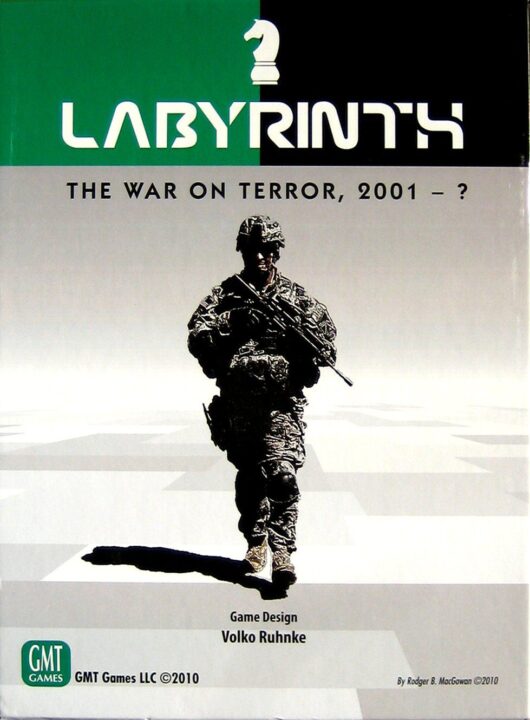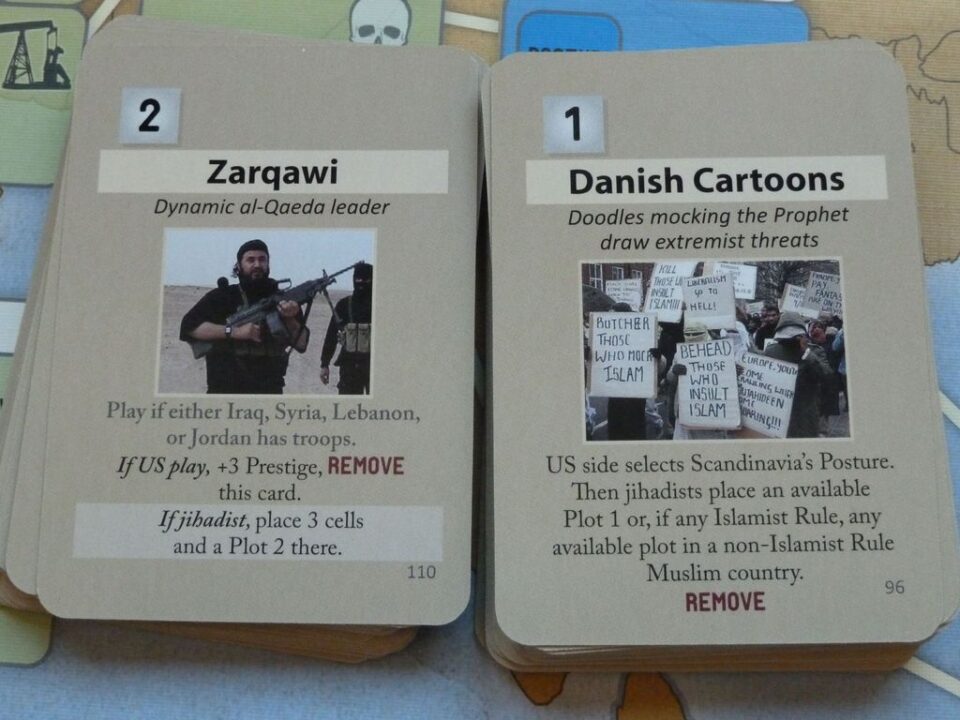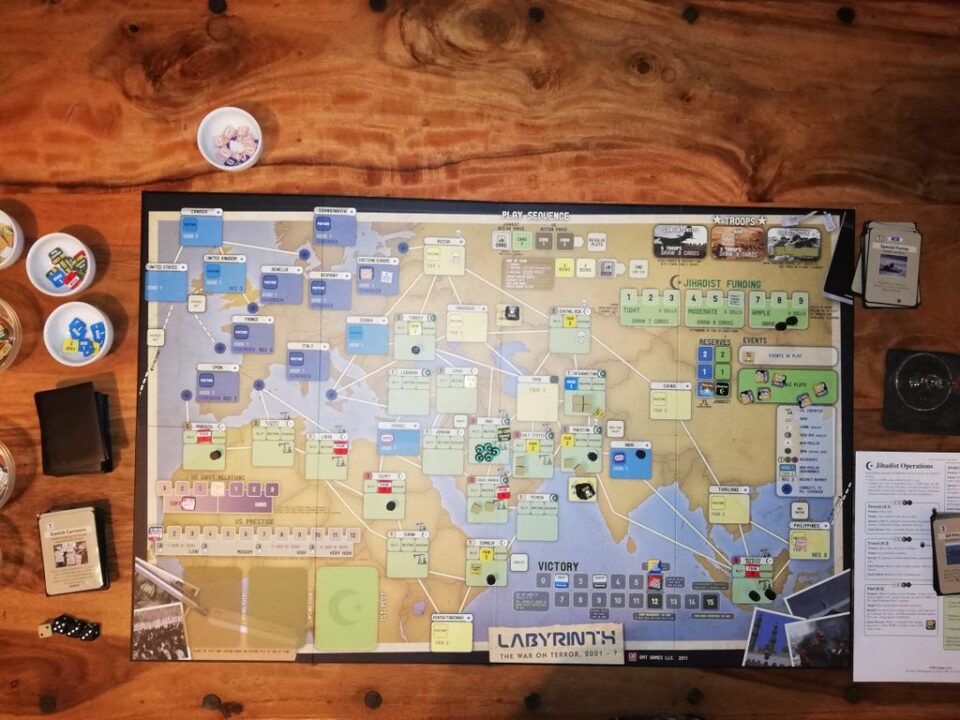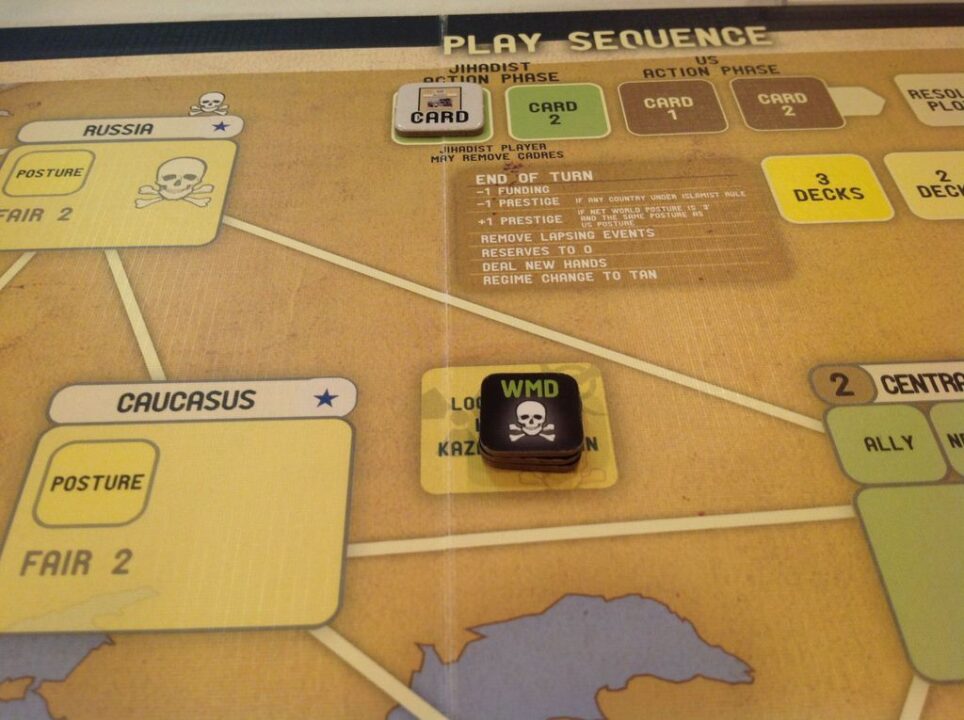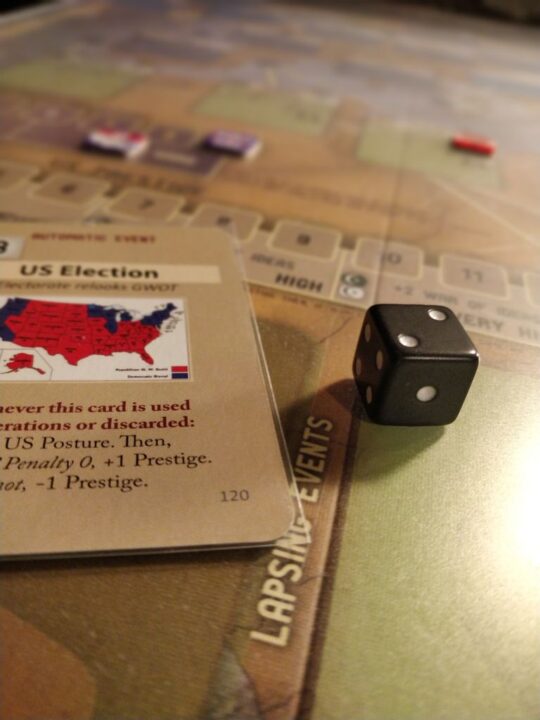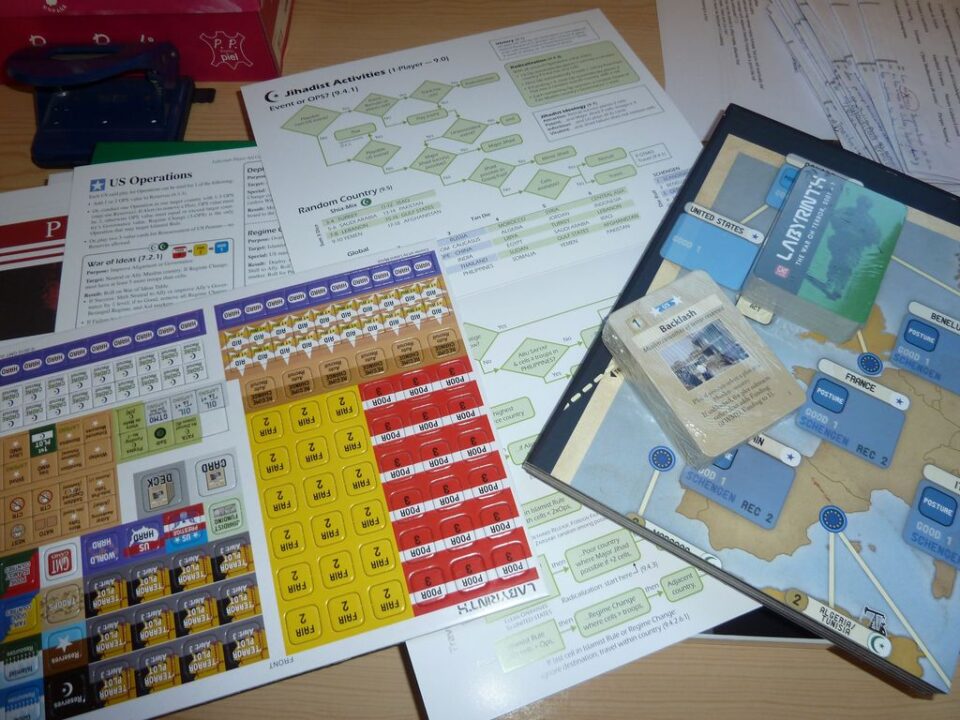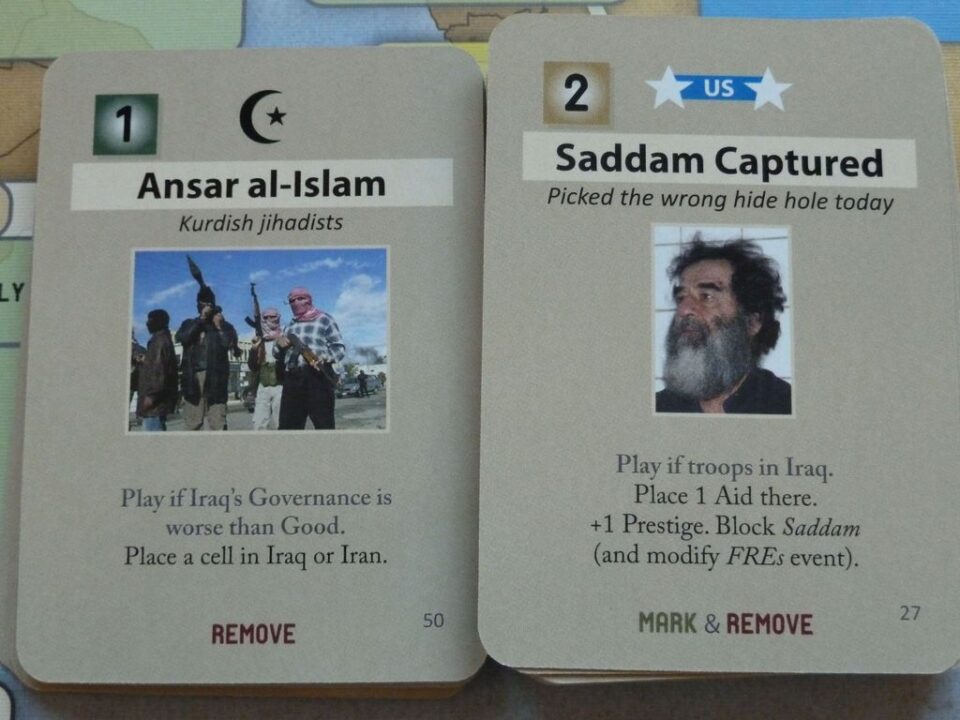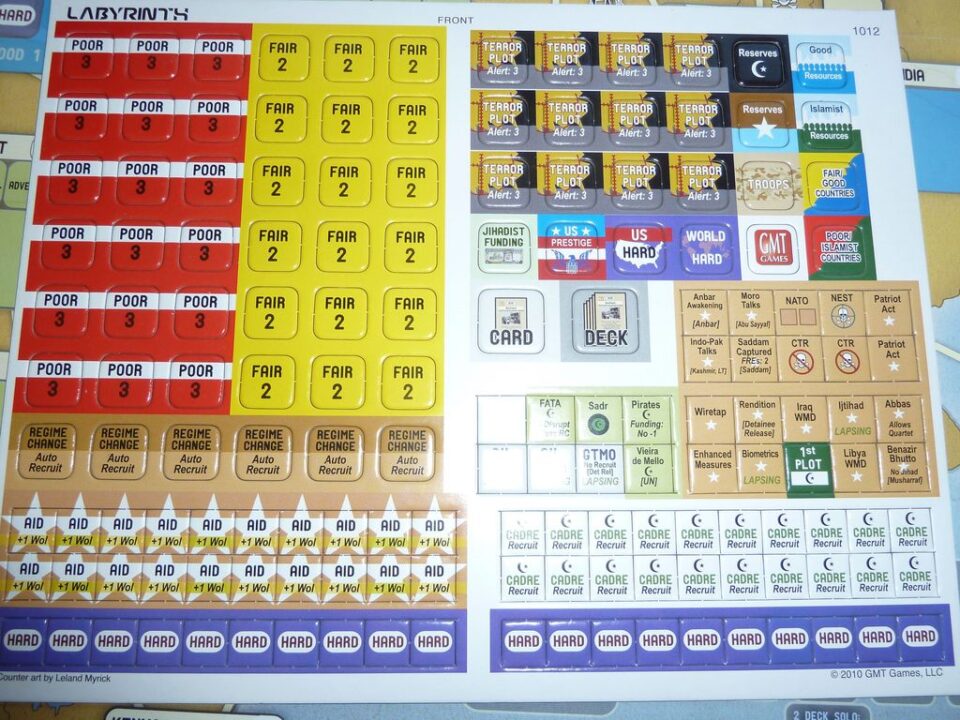Overview
Welcome to my in-depth board game scrutiny, where we peek into the enigmatic alleys of Labyrinth: The War on Terror, 2001 – ??. This review is furnished with perspective, plucked from the numerous showdowns I’ve held across this map of clandestine warfare and geopolitical strategy. Prep yourself for a journey that delves into the essence of asymmetric faction play, a grand tour of the engaging card-driven events, and spirited analysis exposing the critical balance between adept strategy and whimsical fortune.
How It Plays
‘Labyrinth: The War on Terror, 2001 – ??’ pits two players against each other in a strategic duel that captures the complex nuances of modern counterterrorism warfare. Through astute card usage and distinguishable faction strategies, this game presents an engrossing challenge for gamers keen on nuanced tactics and geopolitical simulations
Setting up
The game begins as players assume the roles of either the U.S. or the jihadist, setting the board with markers and cards. Different globe regions begin in various states of governance and alignment, shuttered by handy color codes. Your initial draw of quality cards curse or bless your opening game state.
Gameplay
Turns flow via card-driven events or actions—operations clandestine or forceful envelope the board. Cards dramatize real incidents, each suggestively potent in advancing your faction’s sway or deterring your opponent. Nuanced and refined, this dance begets understanding for toe-to-toe contests.
Winning the game
Victory conditions differ starkly: for the U.S., stabilize the Middle East’s complex political fabric; for jihadists, invoke the tendrils of global jihad. Testing wits, the win emerges from smart card utilization, thoughtful anticipation, and yes, a spoon of chance stirred in, effectively magnifying the game’s crescendo to a finely balanced final thrill.
Want to know more? Read our extensive strategy guide for Labyrinth: The War on Terror, 2001 – ?.
Finesse in Faction Imbalance
First and foremost, Labyrinth: The War on Terror, 2001 – ? brilliantly showcases the power of asymmetry. The delicate dance between the US and Jihadist factions is akin to a theatrical play where each actor enlivens a unique script. Behind the Curtain of War, differing resources, objectives, and strategies guide each player, crafting a narrative soaked in tension.
Moreover, this asymmetry breathes life into the replayability factor. Whenever I switch sides, I’m tossed into a fresh scenario rife with new challenges – a stark contrast to my last endeavor. Embracing the Uneven Stake, it’s a test of adaptability as the blood-soaked chessboard of geopolitics unveils before me.
Smoothly transitioning, this dance of power in asynchronous rivalry perfectly sets the stage for Labyrinth‘s complex card-driven event mechanics.
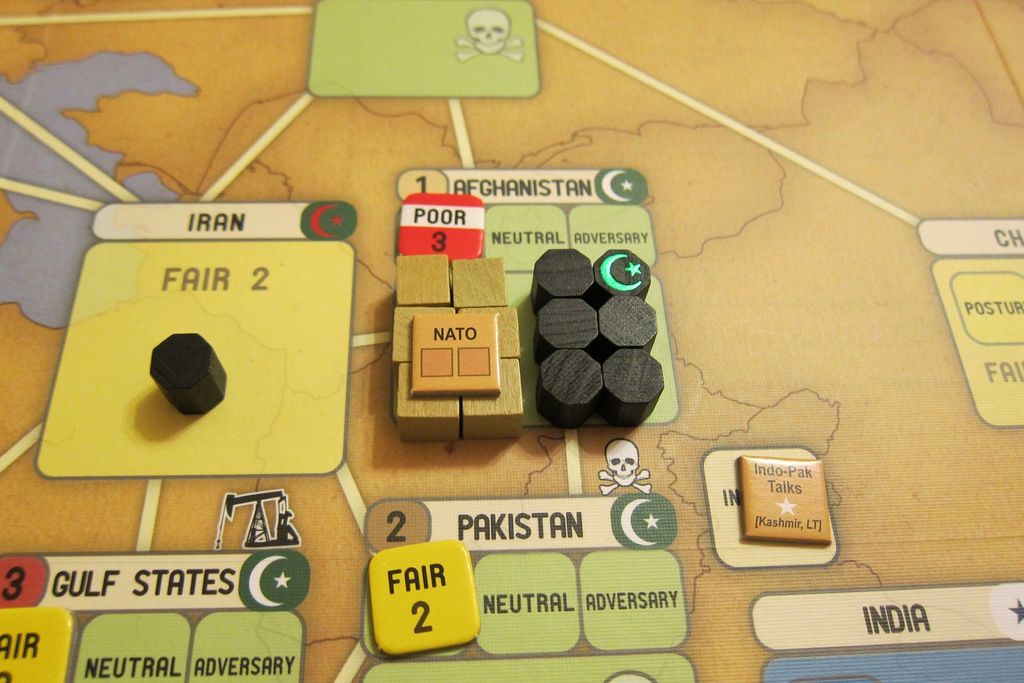
The Pulse of Labyrinth: Event-Driven Excitement
Delving into Labyrinth: The War on Terror, 2001 – ?, the event mechanic is a beating heart, thrusting us into unpredictability at the turn of a card. Remember that tense game-night where the perfectly timed ‘Bin Laden’ card dramatically altered the board state? Pure adrenaline! The asymmetrical factions have to maneuver around each game-changing card, keeping players eternally engrossed.
Diverse Events, Divergent Strategies
One marvelous aspect is each card’s dichotomy—two sides offering a multi-faceted approach to historical events. In one session, my ‘US Election’ move swayed not only global politics but shifted our gaming group’s dynamics instantly. Such immersion!
Tactical Variety in Your Hands
Clever card combos and foreseeing opponents’ potential plays generate a battlefield of wits. Balancing which event to trigger versus which plot to thwart underpins this gripping experience. In Labyrinth, every decision feathers out in a ripple of possibilities, keeping the suspense high until the final reveal. The crafting of tomorrow’s victory is, paradoxically, held in today’s strategic play of cards. As we shift tactics, let’s delve into balancing act needed between sound strategy and fickle fortune.
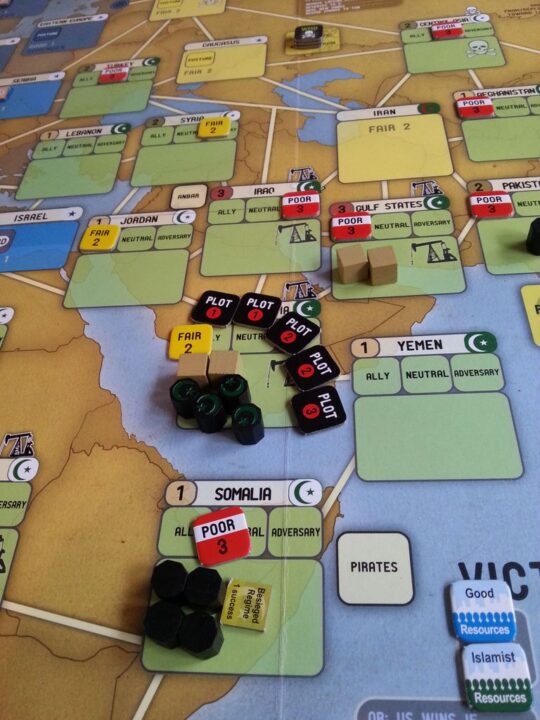
Mastering the Strategy-Chance Tango in Labyrinth
The Labyrinth: The War on Terror, 2001 – ? gaming experience stands out with its delicate interplay between strategy and chance. Moreover, this dance comes alive in the tension woven through every decision and dice roll.
Choosing Wisely
In my numerous outings through this geopolitical maze, the calculated choices become storytellers. They craft a narrative where foresight and adaptability reign. For instance, laying plans feels substantial as the long game matters, even when destiny intervenes with unforeseen events.
Rhythm of Randomness
Nonetheless, luck introduces a spirited unpredictability; a well-timed card or an ill-fated roll adds spice, ensuring that no two playthroughs mirror each other. Particularly impactful was the game where sheer randomness guided an underdog to victory, reminding all players at the table that preparedness must meet opportunity head-on in Labyrinth.
Ultimately, for enthusiasts yearning for a brain-burning strategic session articulated with just enough chance for excitement, I heartily recommend Labyrinth: The War on Terror.
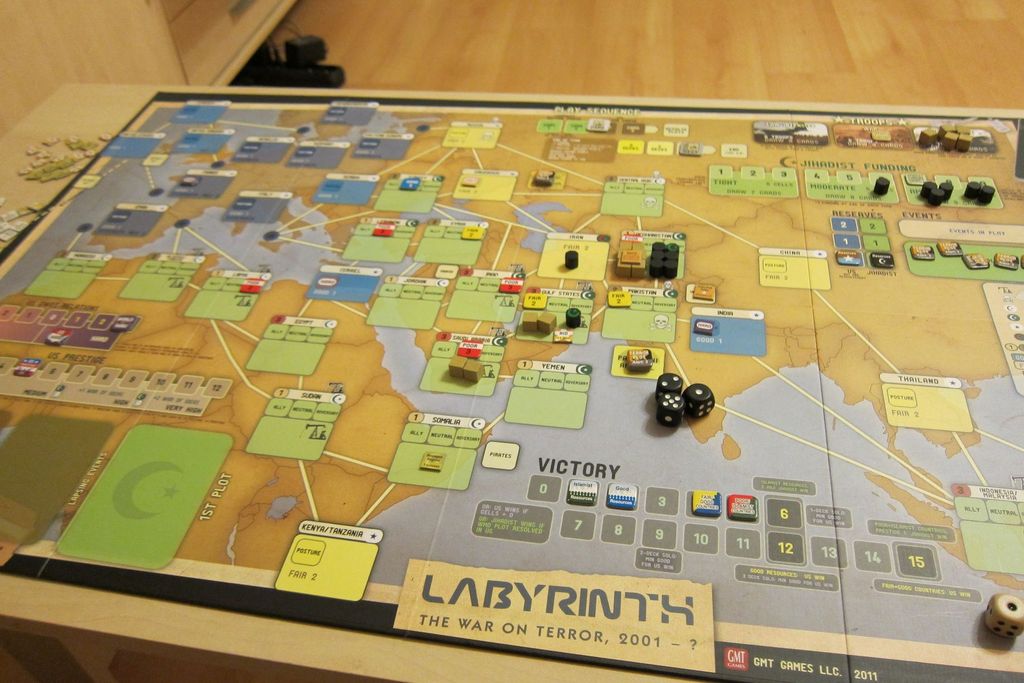
Conclusion
In conclusion, Labyrinth: The War on Terror, 2001 – ?? is a meticulously crafted game that takes players deep into the ideological and military conflicts of the early 21st century. With its thoughtful balancing act between strategy and chance, alongside the richness of asymmetrical factions and card-driven mechanics, this game demands players’ attention and adaptation. Important strategic decisions interweave with enough random elements to ensure that no two playthroughs are the same. Therefore, I am more than happy to recommend Labyrinth to any avid gamer seeking a densely thematic and challenging experience, one that aptly simulates the nuances and uncertainties of global terrorism and counterterrorism strategies.

